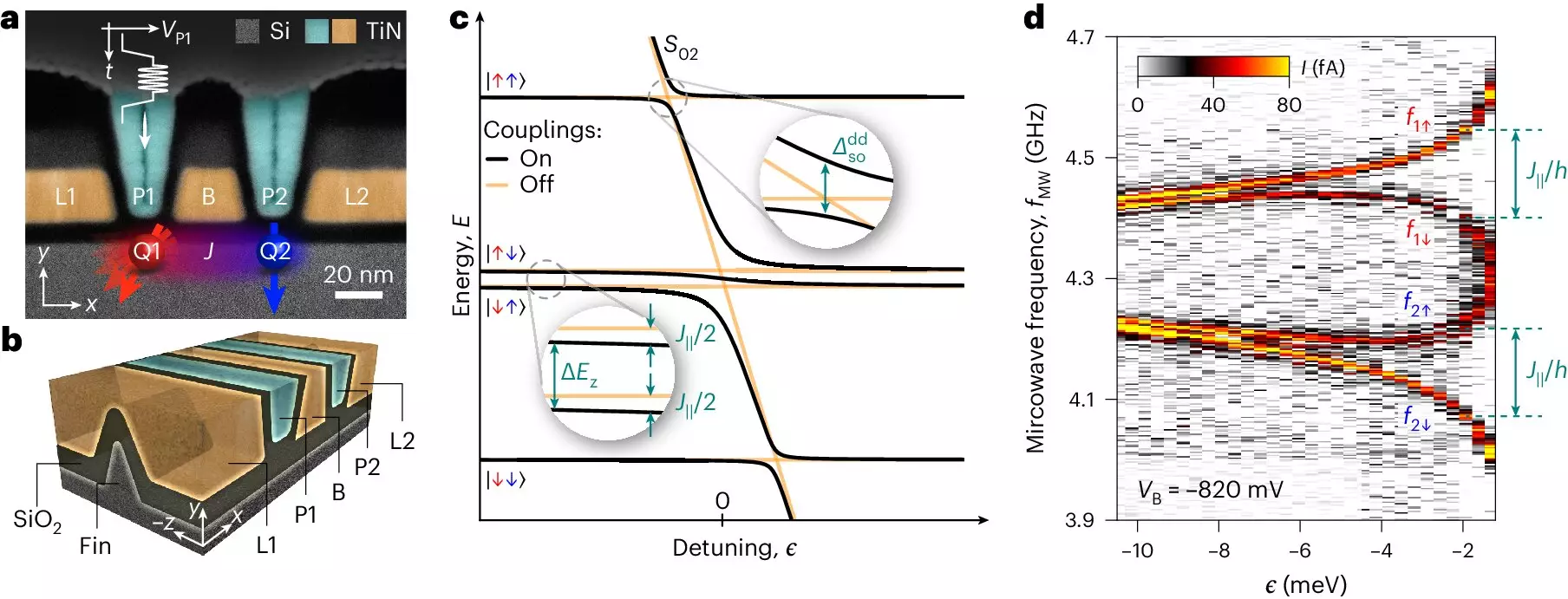Quantum computing is advancing rapidly, with researchers from the University of Basel and the NCCR SPIN achieving a significant breakthrough in the field. By harnessing the controllable interaction between two hole spin qubits in a conventional silicon transistor, the possibility of integrating millions of qubits on a single chip using mature manufacturing processes is now within reach.
The race to build a practical quantum computer is well underway, with researchers worldwide exploring a multitude of qubit technologies. Qubits, the building blocks of a quantum computer, are responsible for processing, transferring, and storing data. In order to function effectively, qubits must exhibit both reliable storage and rapid information processing capabilities. To achieve practical quantum computing, millions of qubits must be integrated onto a single chip, a feat that has not yet been fully realized.
At the University of Basel and the NCCR SPIN, researchers are focusing on a unique type of qubit that utilizes the spin of an electron or a hole in a semiconductor. Holes, which are essentially missing electrons, possess spin that can be controlled electrically without the need for additional components like micromagnets. By leveraging hole spin qubits, the research team has demonstrated the potential for achieving controlled interactions between qubits within existing electronic devices.
A critical component of quantum computing is the use of quantum gates to manipulate and couple qubits for performing calculations. The researchers at the University of Basel successfully coupled two hole spin qubits and executed a controlled spin-flip operation, demonstrating the efficacy of this approach. By incorporating two-qubit gates that are both fast and high-fidelity, the potential for coupling a larger number of qubit pairs is now within reach.
The coupling of two hole spin qubits is based on their exchange interaction, which occurs electrostatically between indistinguishable particles. The unique anisotropy of hole spins, influenced by spin-orbit coupling and motion through space, enables the implementation of two-qubit gates without sacrificing speed or fidelity. The combination of experimental and theoretical physics has allowed researchers to develop a model that explains this phenomenon, highlighting the scalability and robustness of qubits based on hole spins.
By leveraging hole spin qubits and their unique properties, researchers are paving the way for the development of large-scale quantum computers. The proven speed and reliability of hole spin qubits, combined with the established fabrication processes of silicon chips, position this approach as a strong contender in the quest for practical quantum computing. As the field continues to evolve, the integration of millions of qubits on a single chip using mature manufacturing processes becomes increasingly feasible, bringing us closer to the realization of a functional quantum computer.


Leave a Reply